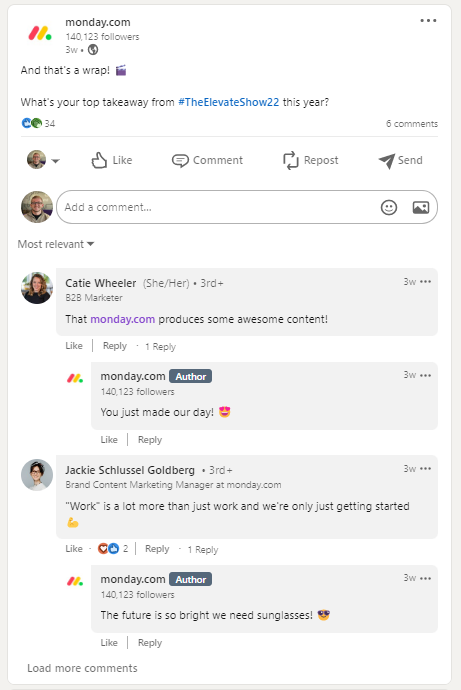The B2B buying journey is evolving. Buyers are losing trust in companies and seeking out trustworthy sources to make buying decisions.
Adopting a customer-first mindset puts you in the perfect position to build trust with your audience, which in turn, builds affinity with your brand.
What is brand affinity?
Brand affinity is the connection between a customer and a company’s brand. When a company builds trust and meaningful relationships with its customers, the entire buying journey is positively impacted by the emotional association that the customer has with it.
To break it down even further, let’s dive into the meaning of the words ‘brand’ and ‘affinity’.
Brand:
The term brand refers to a business and marketing concept that helps people identify a particular company, product, or individual. Brands are intangible, which means you can’t actually touch or see them. As such, they help shape people’s perceptions of companies, their products, or individuals.
Affinity:
1. a natural liking for or attraction to a person, thing, idea, etc.
2. a person, thing, idea, etc., for which such a natural liking or attraction is felt.
3. inherent likeness or agreement; close resemblance or connection.
When you bring these words back together, we can see that brand affinity runs deeper than any other branding objective.
Brand affinity vs. Brand awareness
For years marketers have used ‘brand awareness’ as a generic term to burn through budget without being scrutinised.
It goes a little like this…
- Marketing runs a bunch of display ads on different channels.
- The business sees no meaningful impact from the ads on the bottom line.
- Marketing claim that the ads were still successful because the objective was brand awareness – pulling out vanity metrics like impressions to show how many people saw the brand’s logo and products.
- The business accepts the campaign result.
The issue with this is that simply seeing a logo or product has no true meaning.
For starters, in today’s world we’re so accustomed to seeing ads that we’re programmed to block them out, so simply seeing your logo isn’t going to make anybody remember it.
Secondly, the change to the B2B buyer journey means that audiences are relying on trusted sources for validation before making purchase decisions. And unfortunately, your display ad isn’t a trustworthy source of information.
So, the key is to create memorable, meaningful touchpoints with your audience that they remember. More meaningful touchpoints strengthen the connection and trustworthiness towards your business – that’s brand affinity.
Brand affinity vs. Brand loyalty
There’s some crossover between brand affinity and brand loyalty, but you could argue that affinity is stronger than loyalty.
Brand loyalty is often formed out of familiarity and habit. Even if you’re not 100% satisfied with your product/service, you may continue to use a brand out of convenience and ‘because that’s what we’ve always done’. This doesn’t mean you have a genuine connection with that brand.
Brand affinity encompasses brand loyalty by creating an emotional connection between your customer and your brand – meaning they are loyal because of their affinity.
The importance of brand affinity in B2B
Unlike B2C, customers don’t impulse buy B2B brands. B2B purchases are usually a more thought-out process – they often require more time and input from the buyer, which means that building brand affinity is all the more important. When you have an affinity with a brand you’re more willing to put in the time and effort that’s required in a B2B purchase.
How to build brand affinity
1. Know your audience
The first step to building brand affinity is understanding your ideal buyer persona. Brand affinity requires you to create touchpoints that resonate with your audience and knowing how they tick is key to creating them.
2. Have a unique point of view
Brands that follow the crowd tend to lack brand affinity because people don’t resonate and connect deeply with generic messaging. A unique, sometimes controversial, message is less likely to appeal to everybody, you’re more likely to connect on a deeper level with the people that matter most to you – your ideal buyer.
3. Create helpful content for your audience
One way to build trust and connections with your audience is by creating genuinely helpful content. The key is to always approach content with the intent to help and provide value – not to sell. Think of your content as giving free consultative advice; answer common questions your audience has, share some of your expert opinions or experiences to help people overcome challenges. In turn, not only will this build the bond between you and your audience, but it will position your brand as an industry leader.
4. Create customer communities
Whilst brand affinity refers to the connection between customers and your brand, bringing your customers together can help strengthen that bond. Creating and engaging within customer communities has multiple benefits:
- It brings like-minded people together that share the same passion for your brand.
- It empowers people to rally around your brand – taking people from customers to advocates.
- When you interact with your customer community it shows you’re listening to them and care about their feedback.
5. Engage in existing communities
Engaging in conversations outside of your own communities, like on social media, shows that your brand listens, supports and cares about what your customers are saying. Helping to answer questions and solve problems in communities is a great way to build new connections and position your brand as a thought leader.
6. Streamlined sales process
First impressions count. A key interaction your buyer has with your business is when they express interest in talking to sales. As such, it’s essential that this process is smooth and aligned with their needs. Even if you have an incredible product, if your sales process is disjointed, the chances of building affinity with your brand dramatically reduce, meaning customers are less likely to recommend your business to their network.
7. Excellent customer service
Strong brand affinity requires every touchpoint with your business to be positive. Providing excellent customer service simply builds upon the customer’s connection with your brand.
How to measure brand affinity
Firstly, many B2B companies don’t focus on building brand affinity because it’s hard to track. It’s often hard to measure through software attribution because it’s an emotion and opinion that’s qualitative, not quantitative.
So, what are the best ways to measure brand affinity?
1. Talk to your customers
Conduct customer research to understand how customers feel about your brand and how likely they are to recommend you. Go a step beyond sending out an email survey and start interviewing customers yourself to truly understand their emotions.
2. Social media engagement
Look at your social media profiles and understand who is engaging with your content and if they’re resonating with your message. You could also utilise social listening tools to see what people are saying about your brand.
3. Net promotor score survey
Net promotor score (NPS) is a common metric used to understand how likely it is that a customer would recommend your brand/product/service to somebody else. NPS surveys can work well for organisations that find it hard to gather manual qualitative feedback. There are lots of survey tools available to conduct NPS surveys, including HubSpot Service Hub.
Examples of companies using marketing to build brand affinity
GONG
Gong is a revenue intelligence tool that businesses use to analyse customer-facing interactions across phone, email, and web conferencing to deliver insights they need to close more deals.
As a brand, Gong understands every inch of its audience. They use social media incredibly well to empathise and engage with their followers.
The screenshots below show how Gong understands its audience on a humorous and serious level.
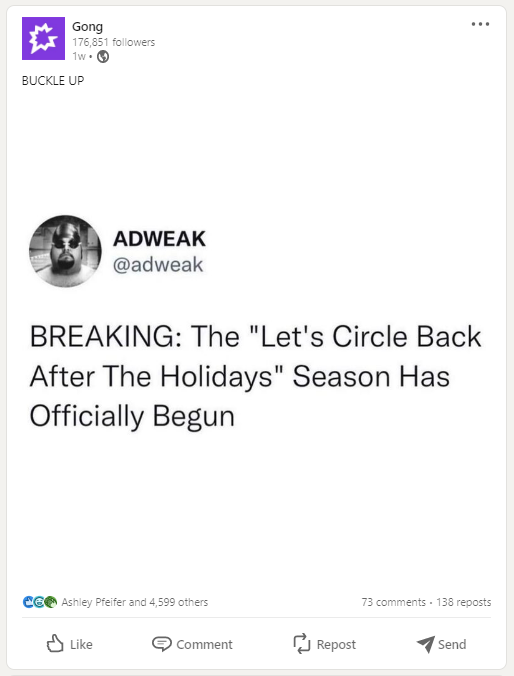
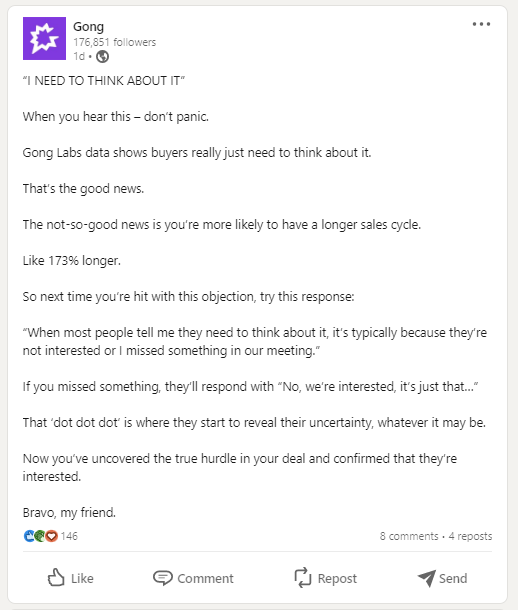
HubSpot
HubSpot is a marketing, sales, and customer service platform that helps companies grow better.
The HubSpot community is a fantastic example of customer engagement. One of the standout areas of their community is the HubSpot ideas forum. Here, customers can submit ideas for new features and forum members can upvote and comment. The conversations fuel HubSpot with use cases for the feature and highlight helpful workarounds.
HubSpot product managers use the ideas forum when planning their roadmaps, and crucially, provide status updates on each idea to keep their customers informed. This shows they’re listening to their customers and value their input.
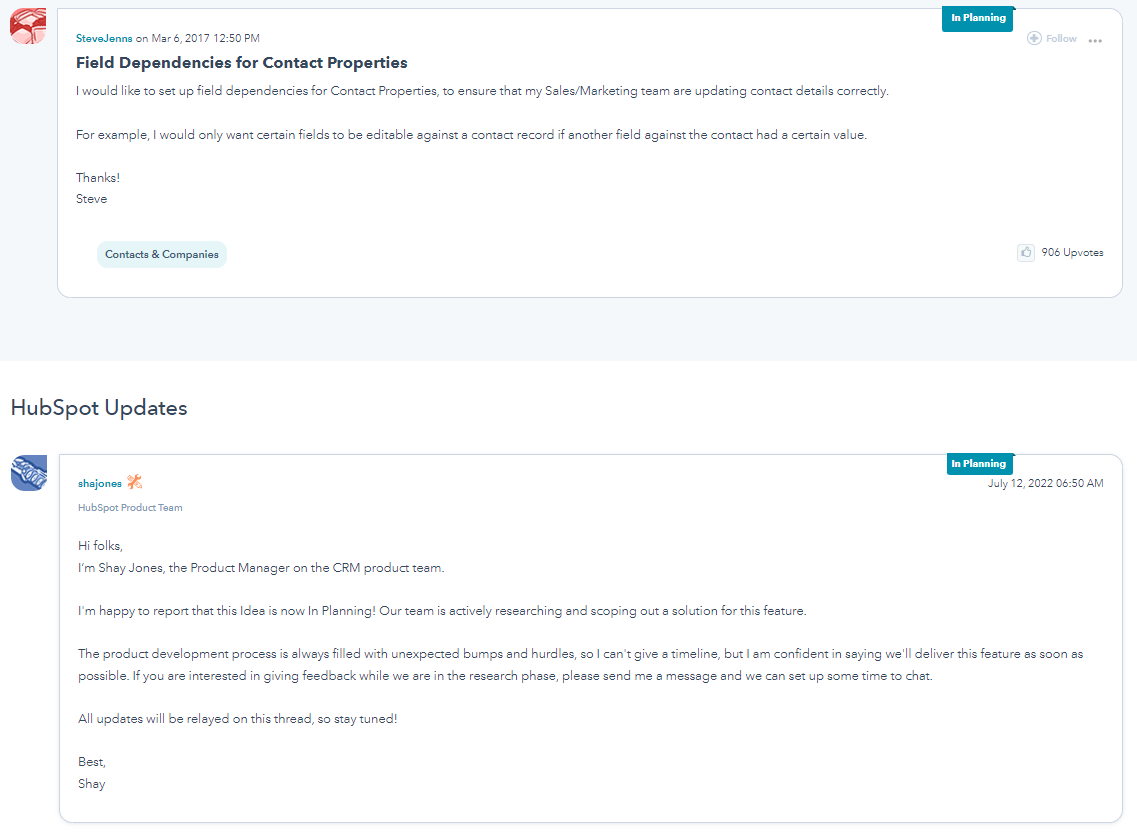
Monday.com
Monday.com is a customizable web and mobile work management platform, designed to help teams and organizations with operational efficiency by tracking projects and workflows, visualizing data, and team collaboration. It includes automation capabilities and supports integrations with other work apps.
They encompass all the great elements of building brand affinity: engaging community, strong social messaging, and good customer service.
Not only do monday.com have a lively community forum where customers can submit ideas and ask questions, but they also bring customers together with events.
Their recent ‘Elevate Show 2022’ is a great example of bringing their community together. As well as speaking about their own platform, they have industry-leading experts to help customers in all areas of their working life.
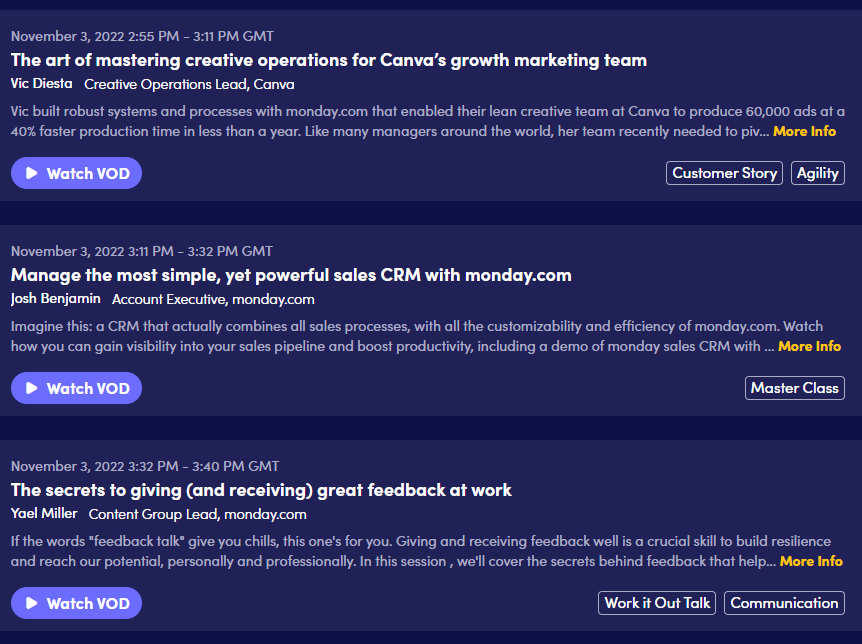
Following this, they then engaged with the attendees on social media to understand how the event landed.
